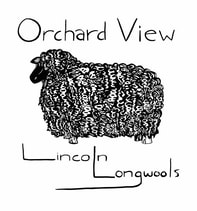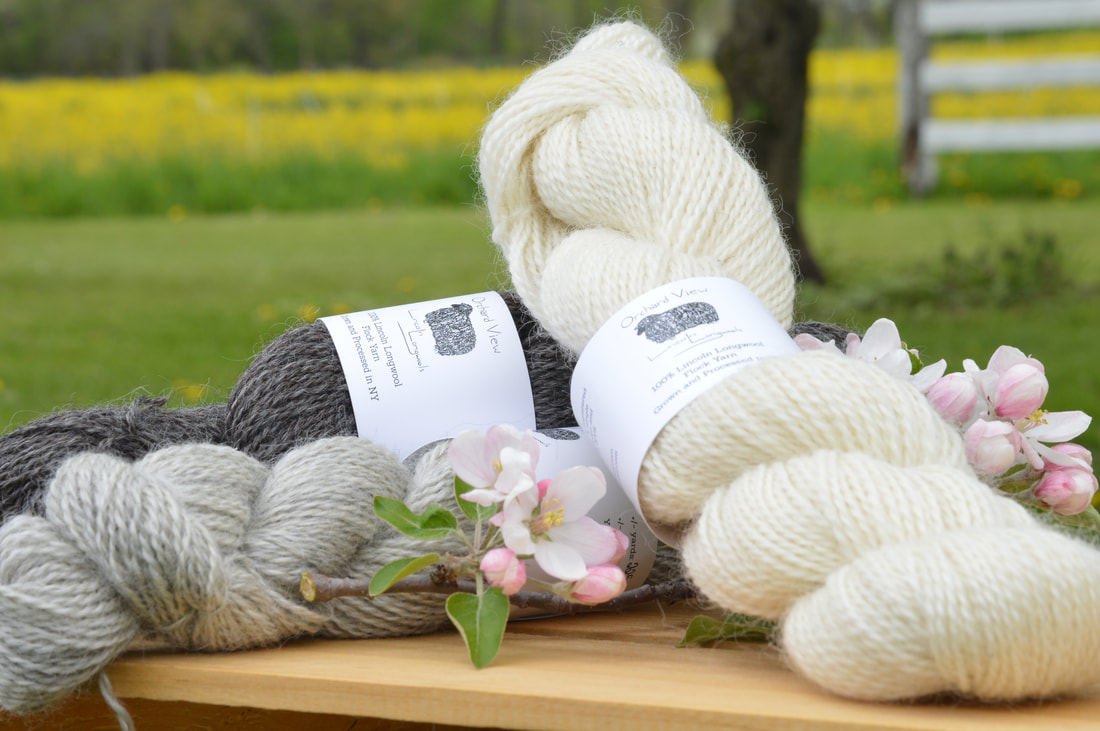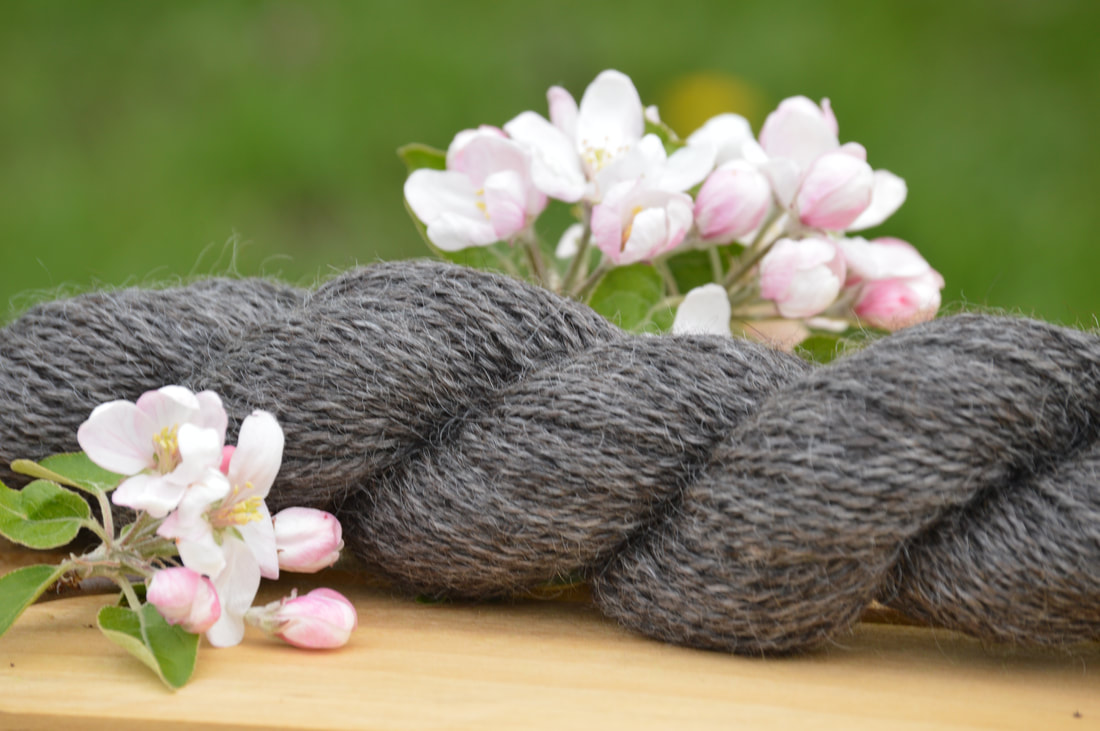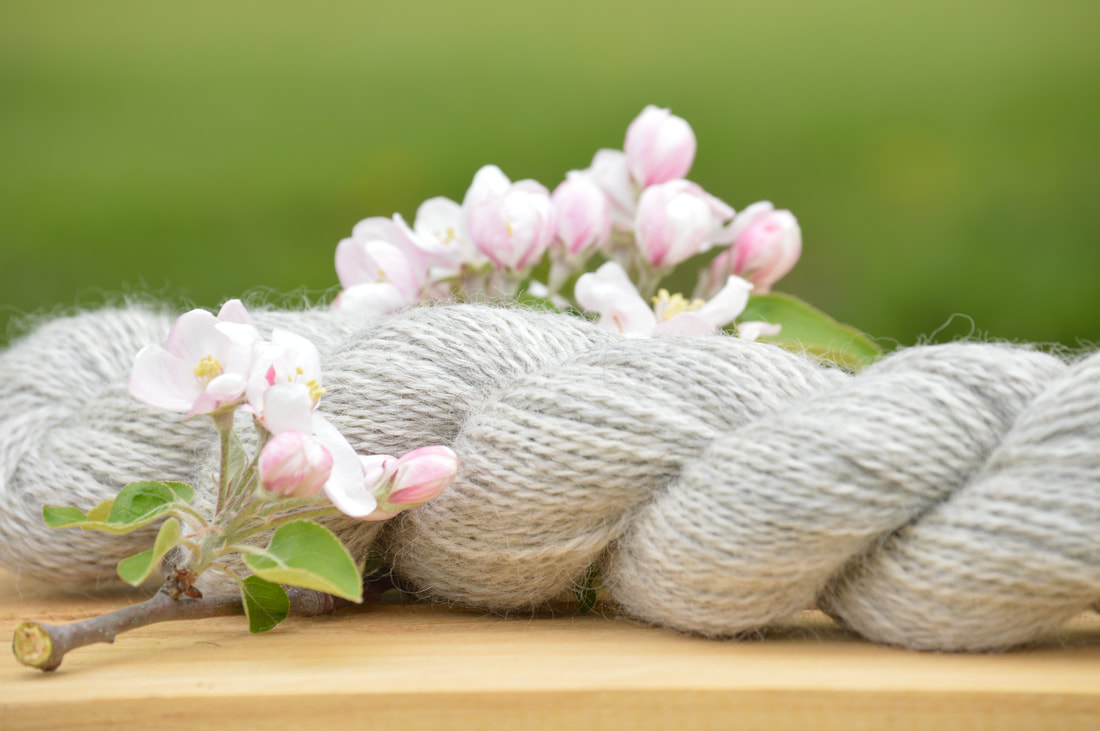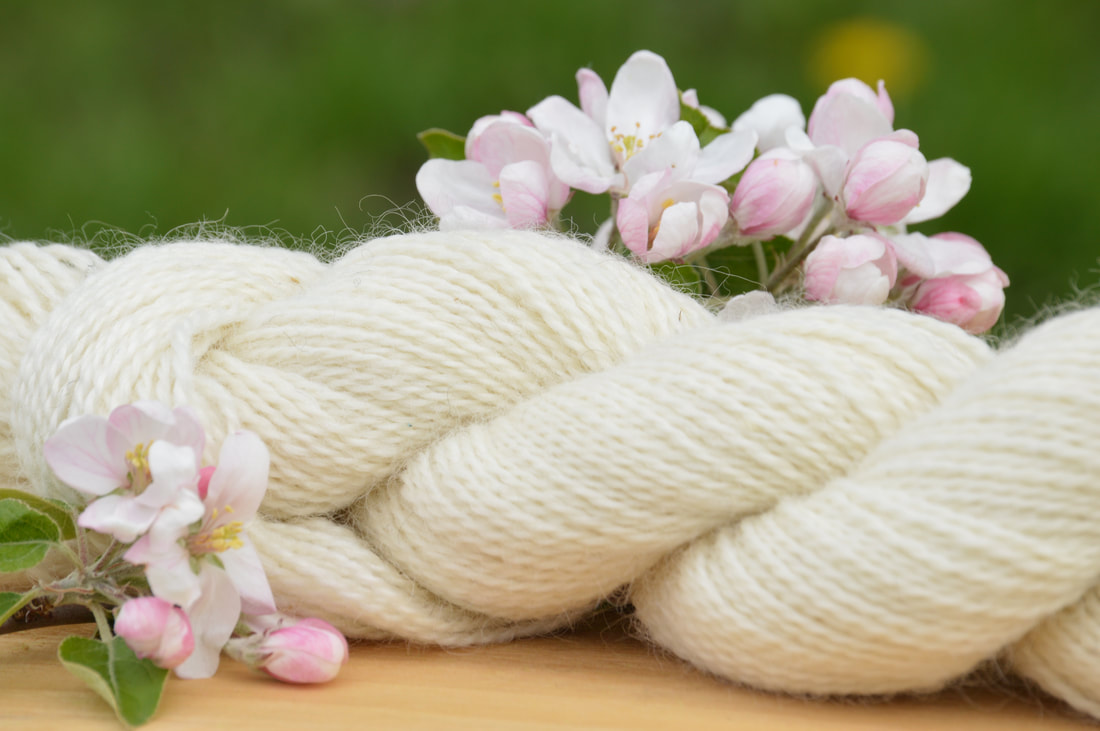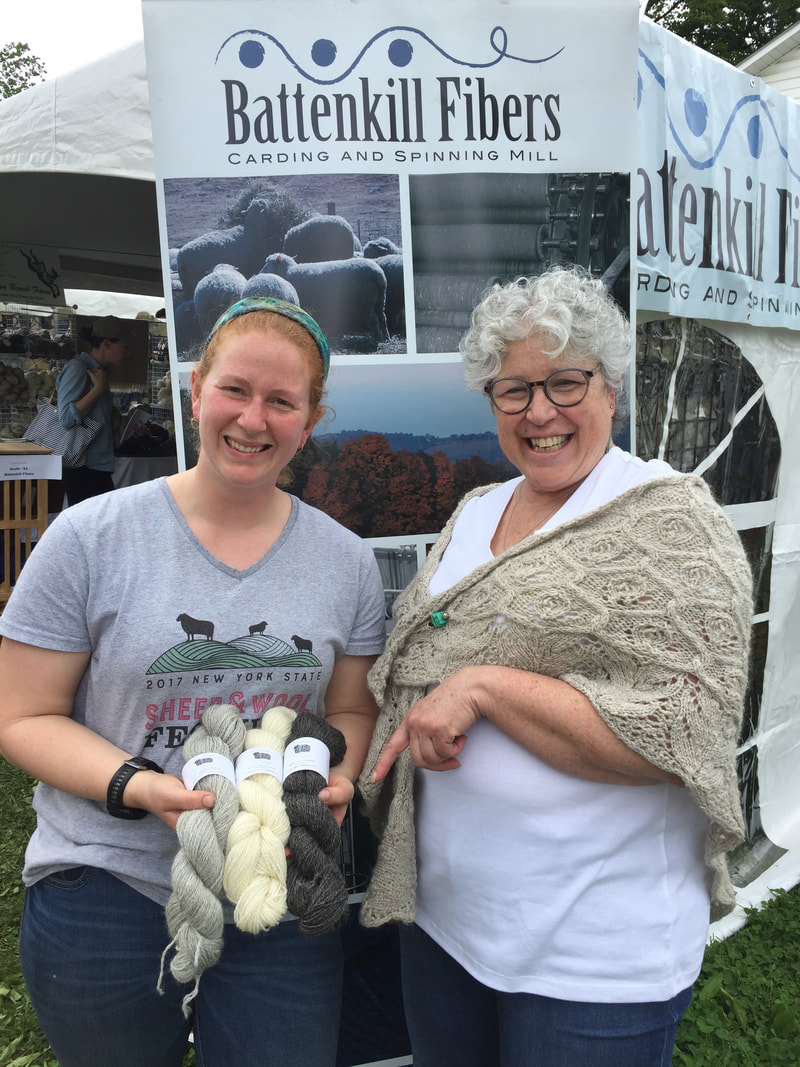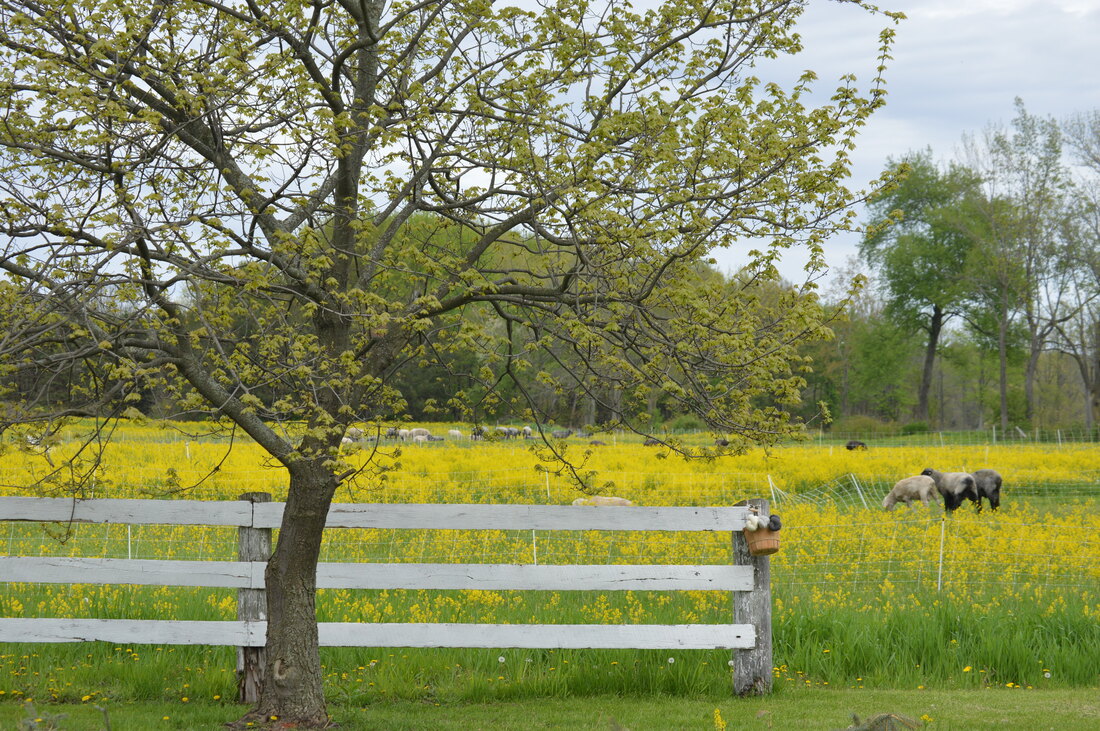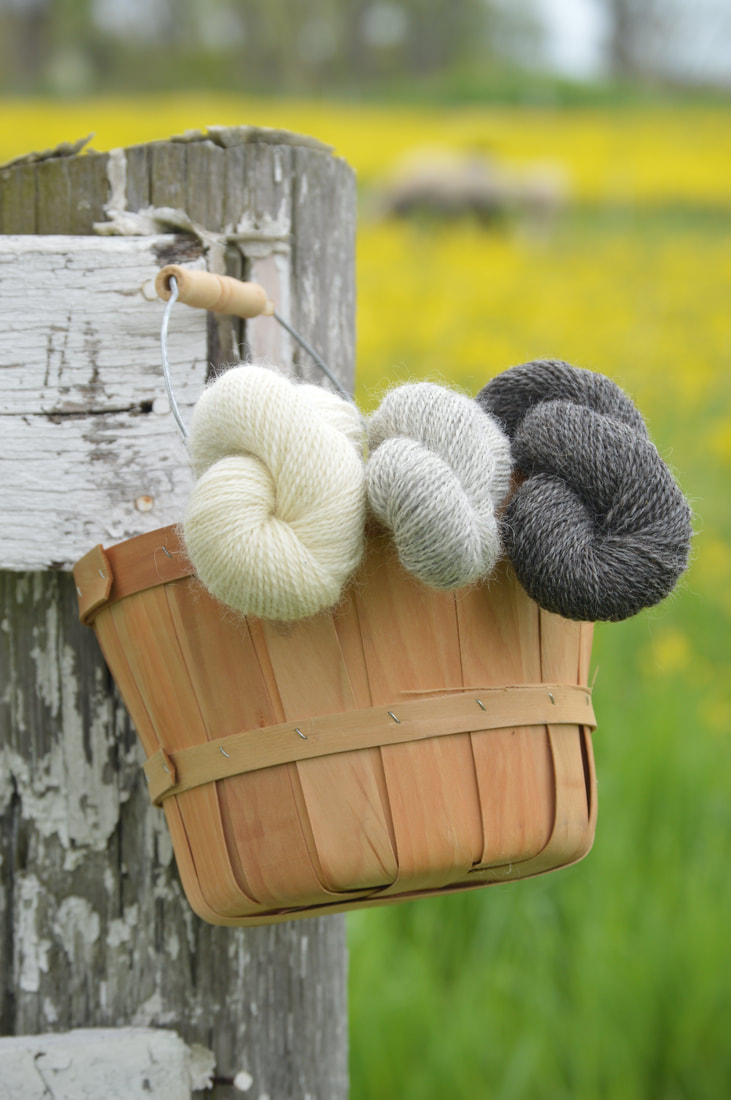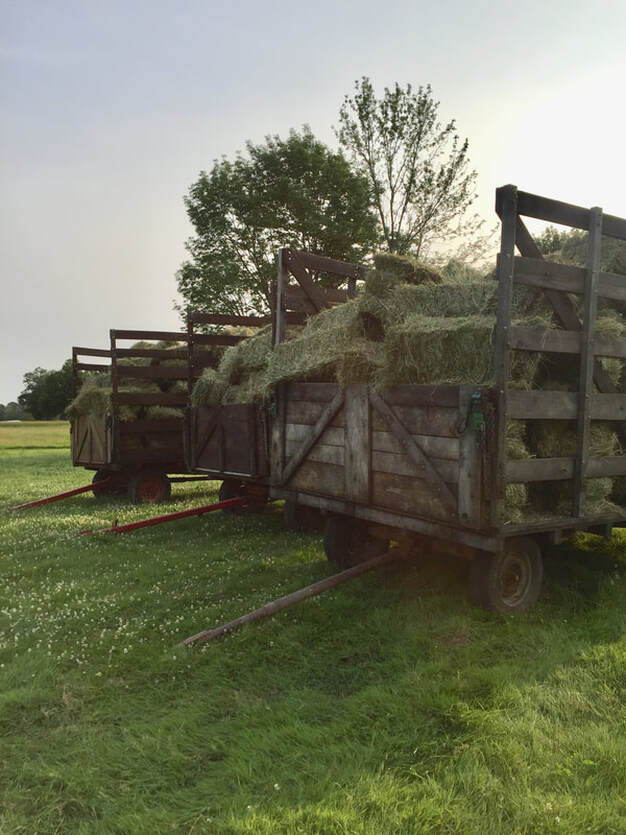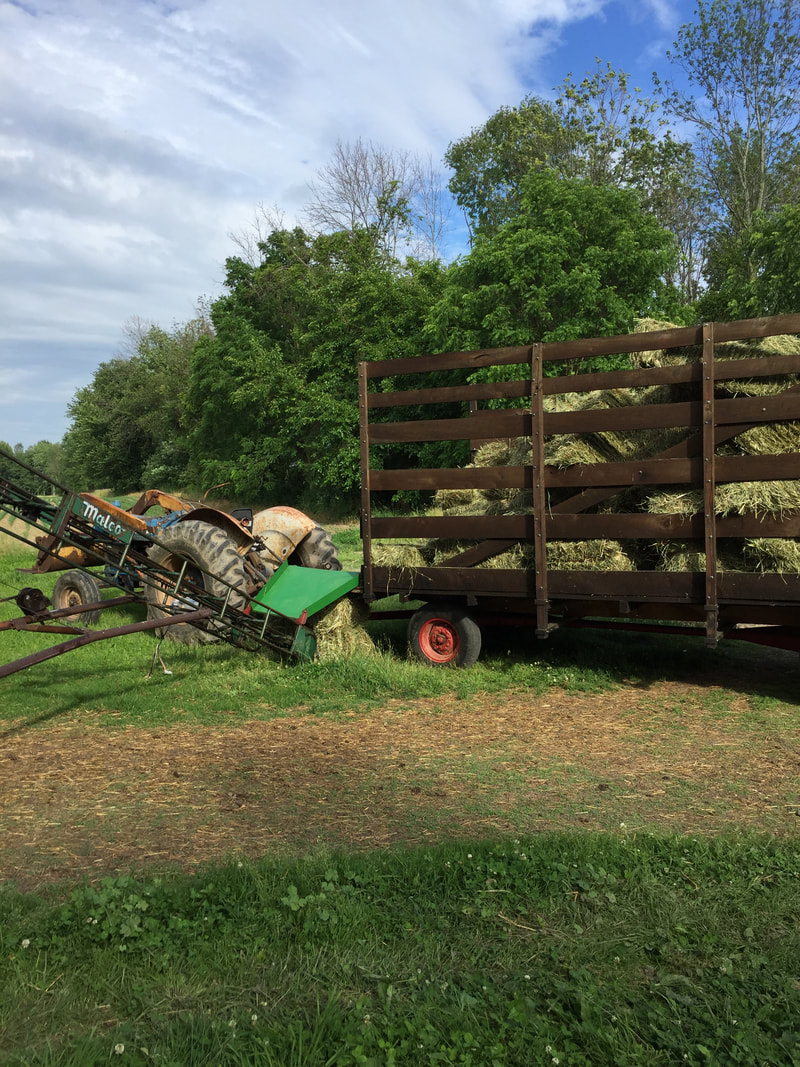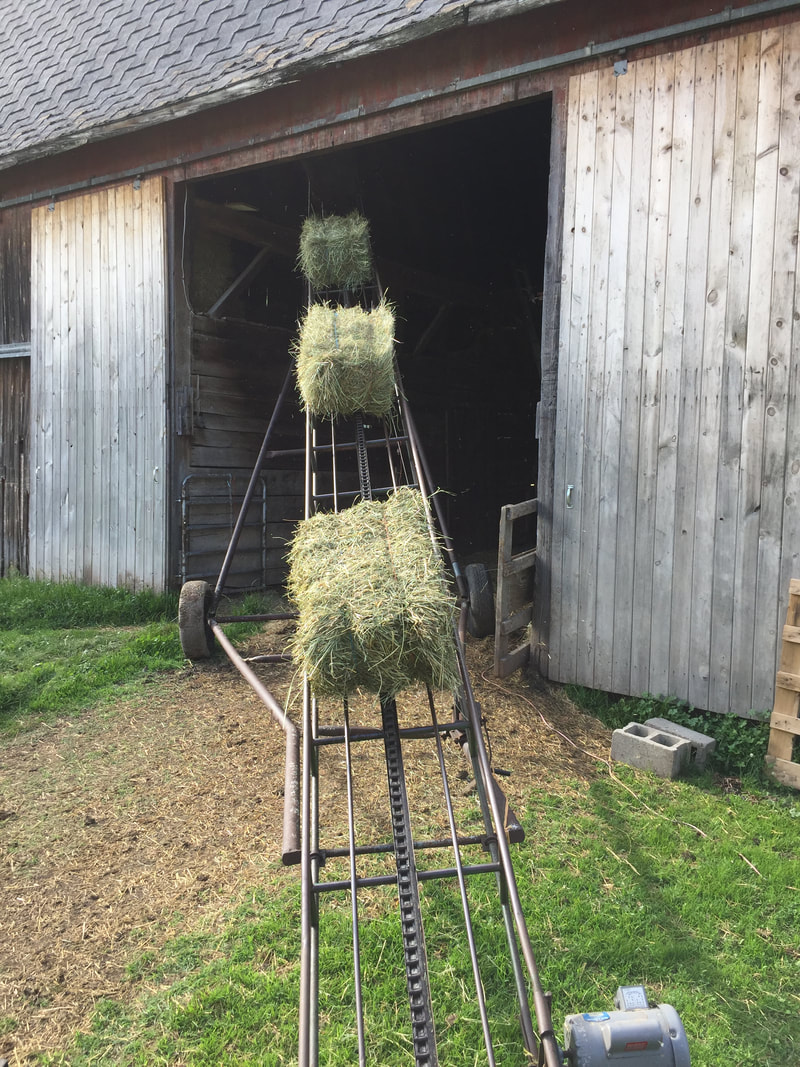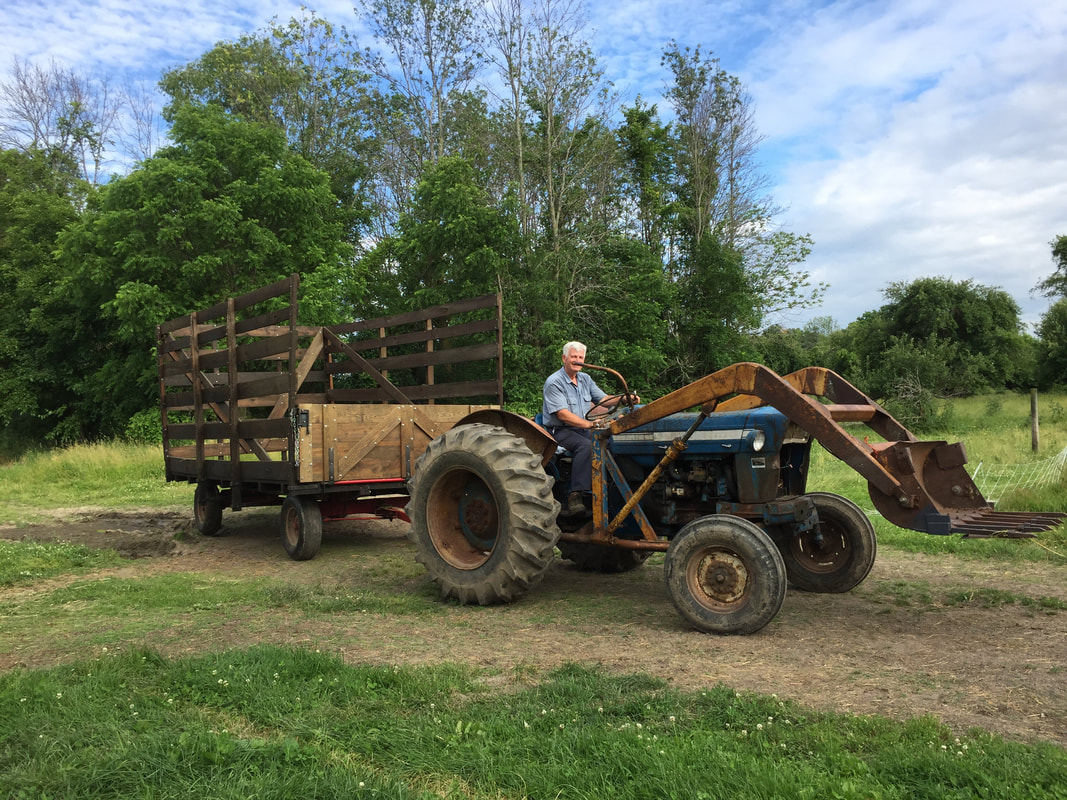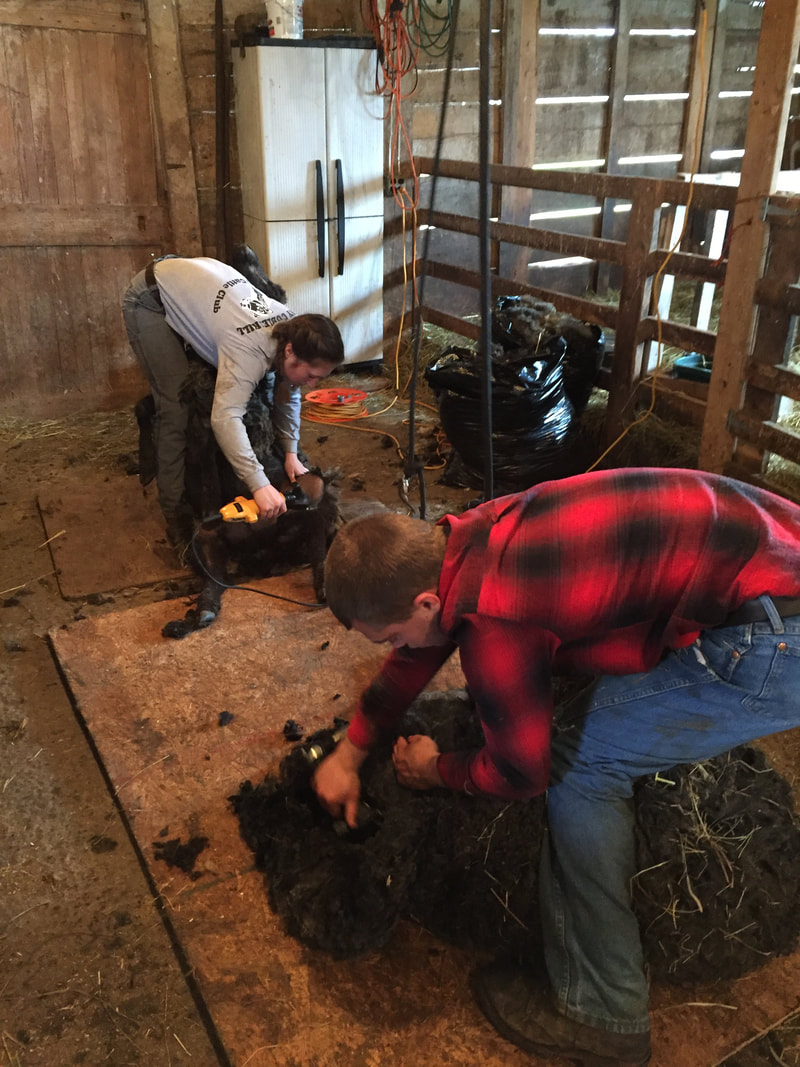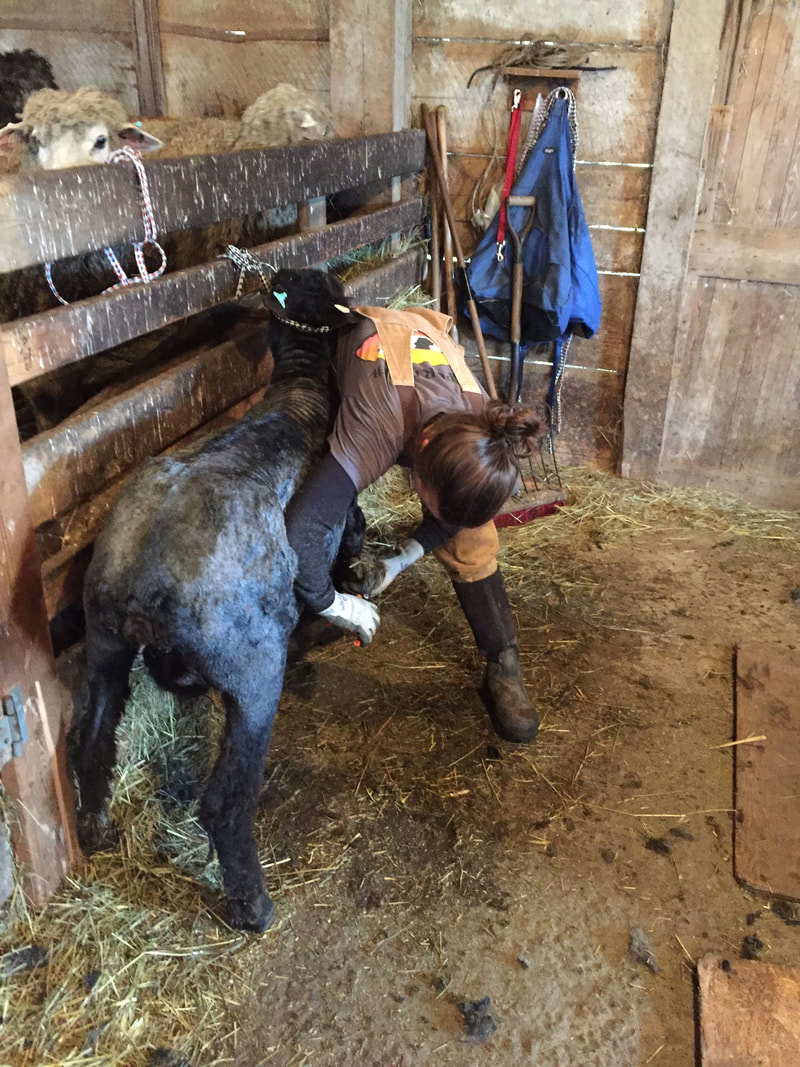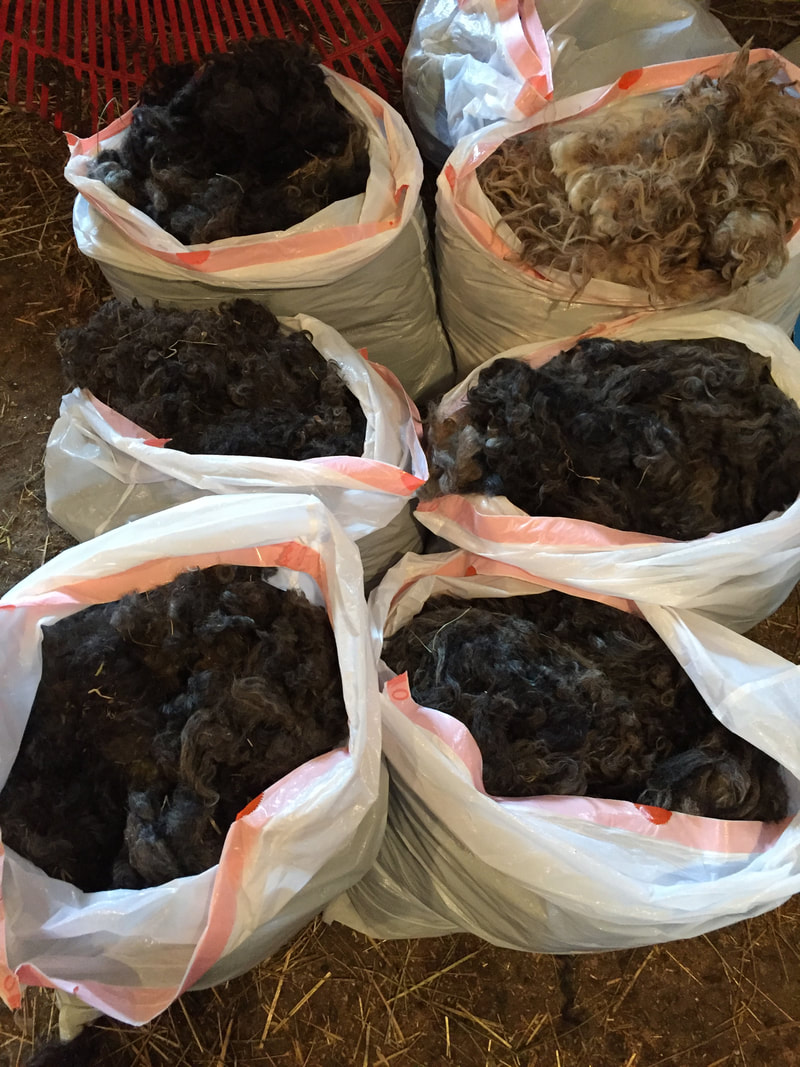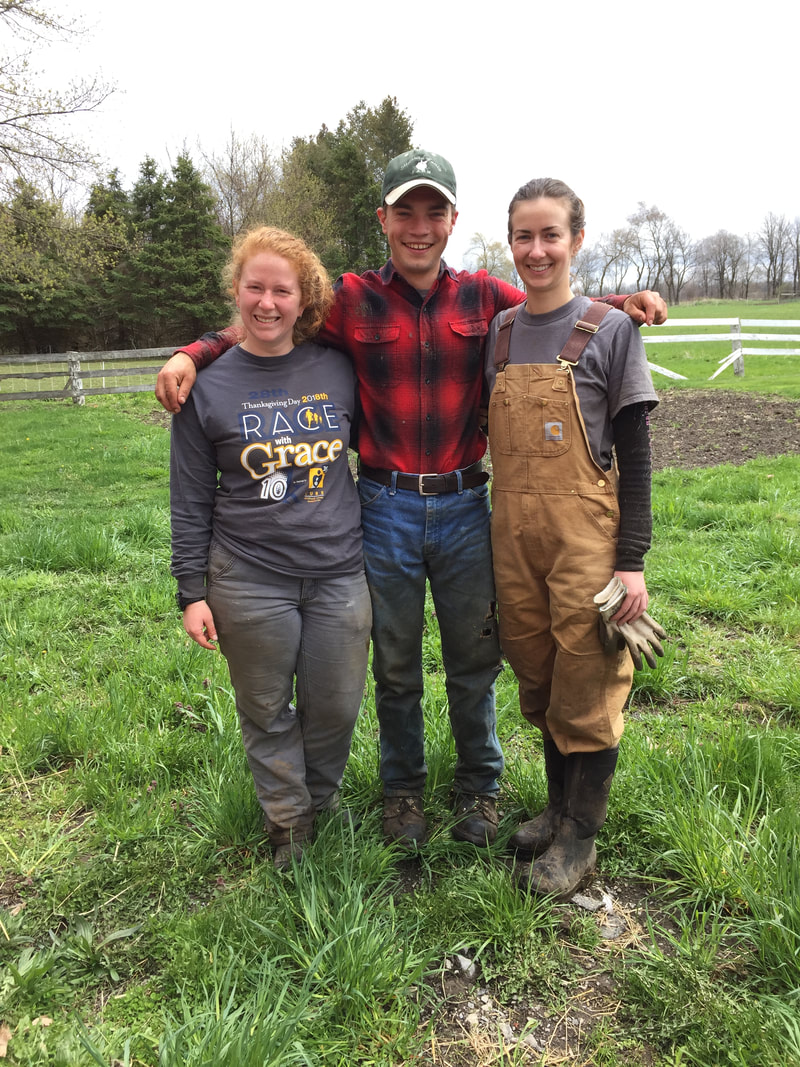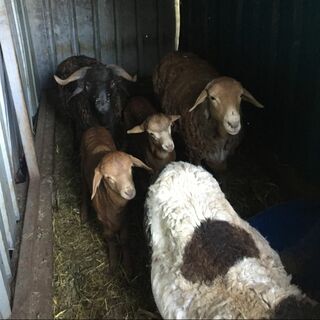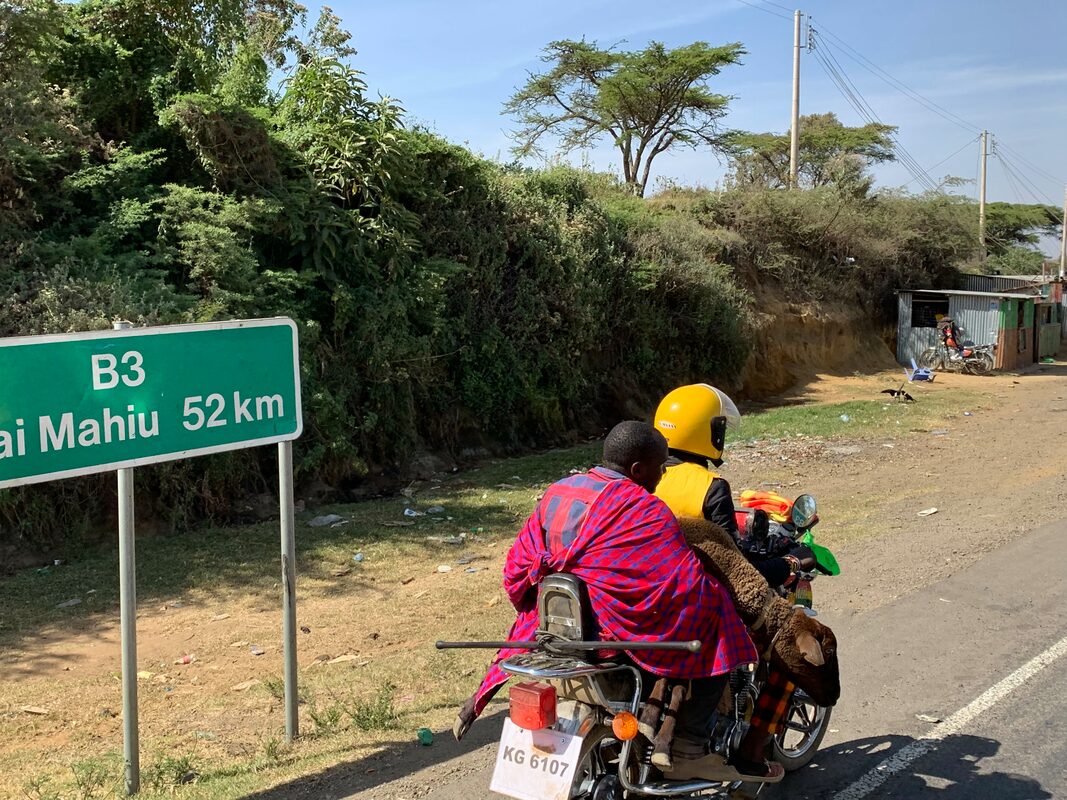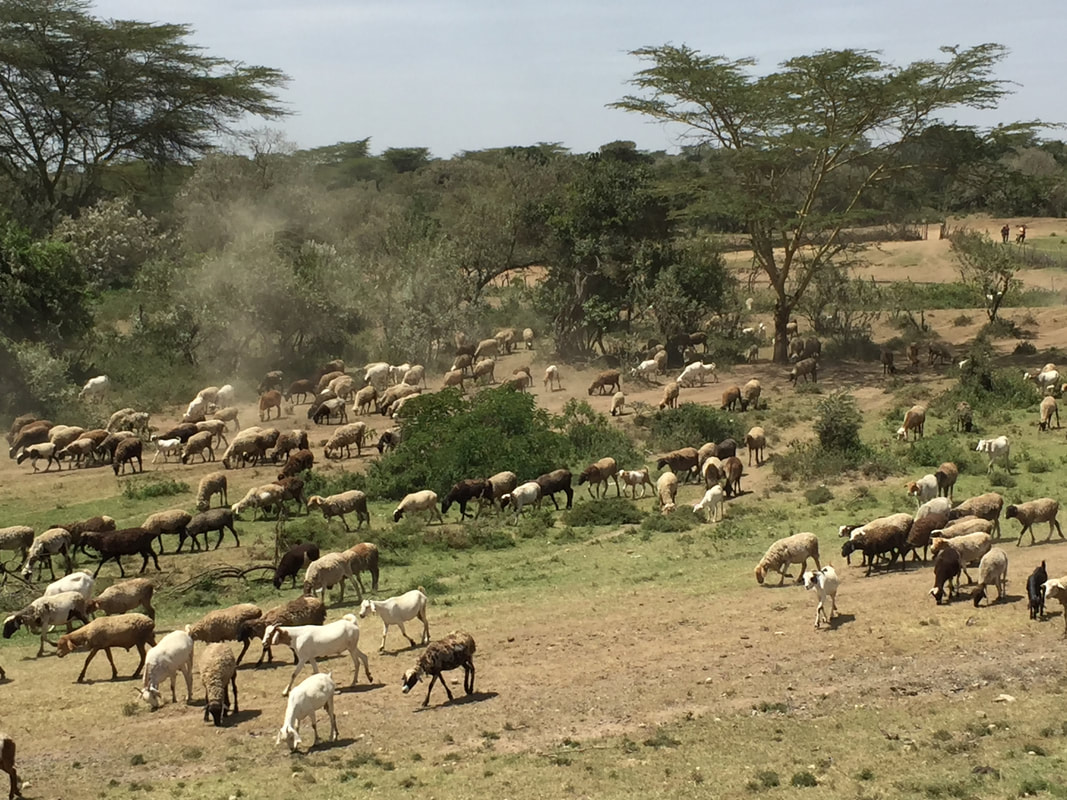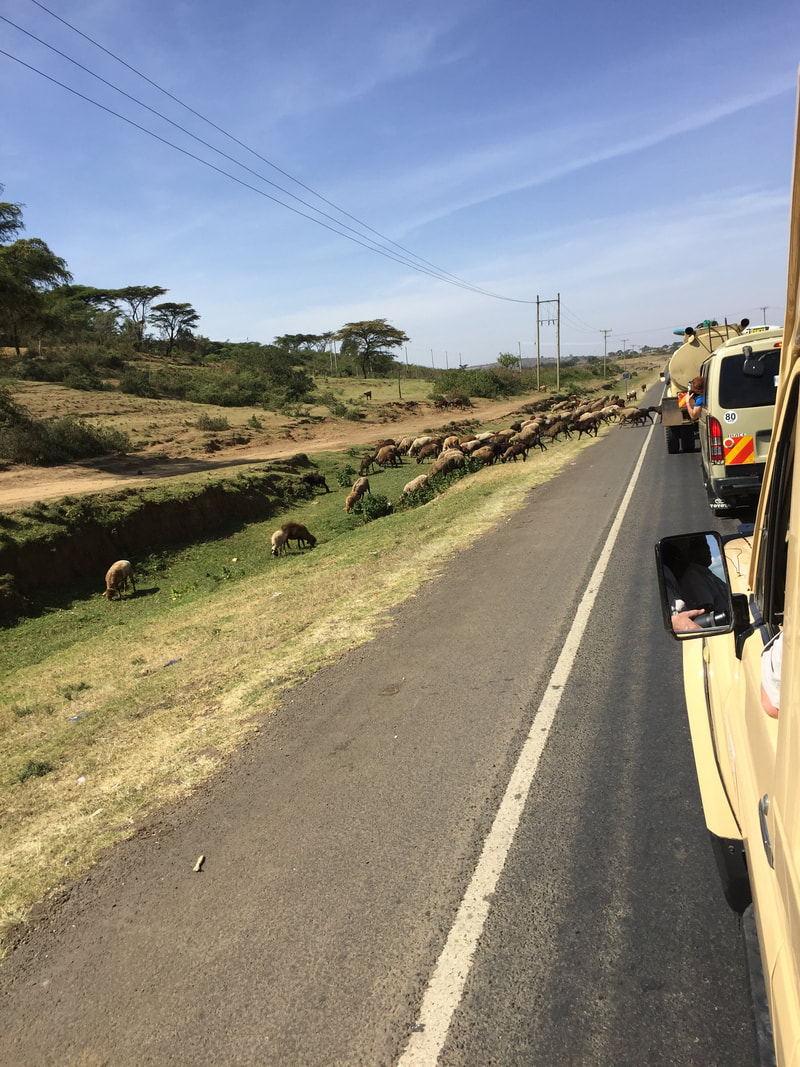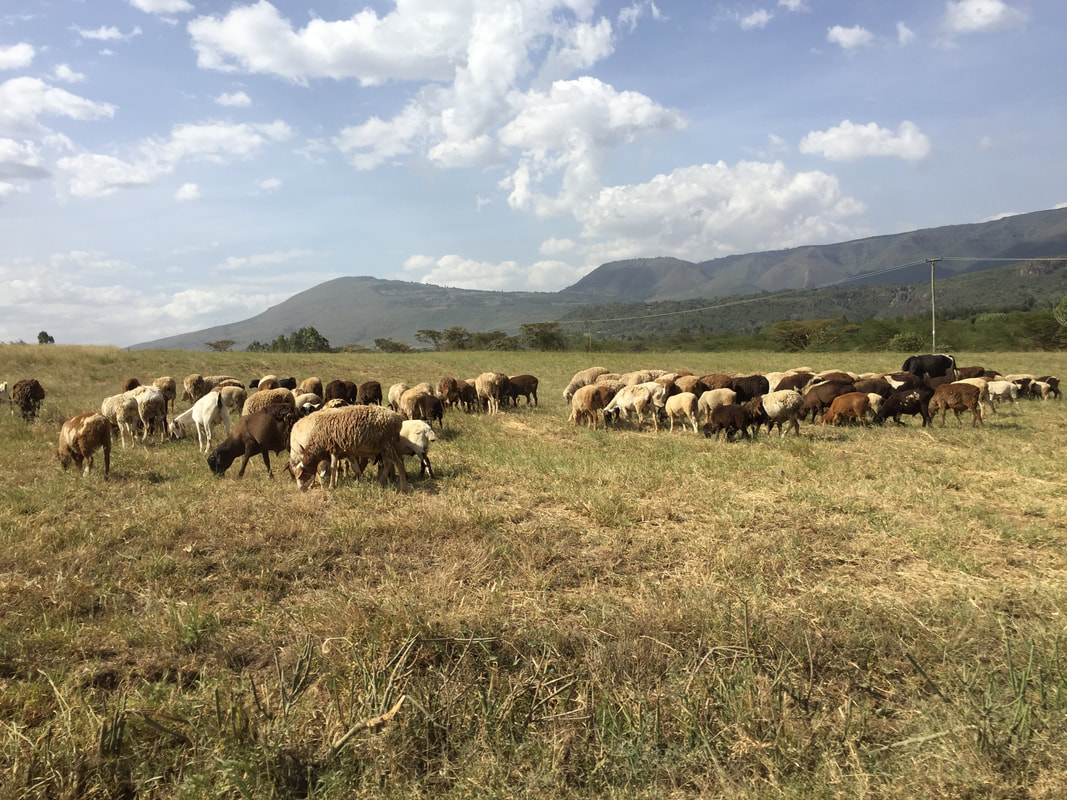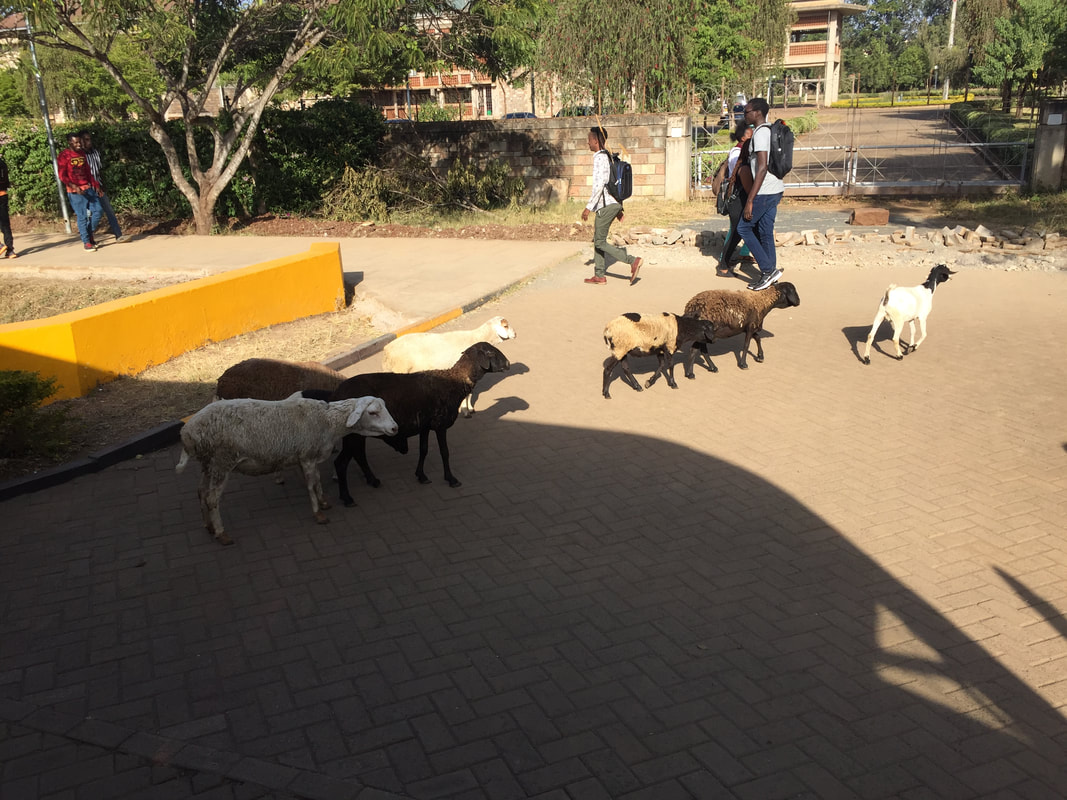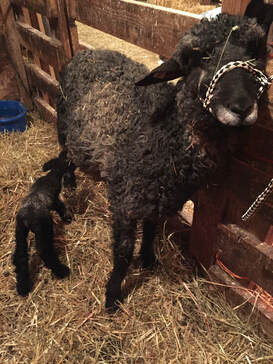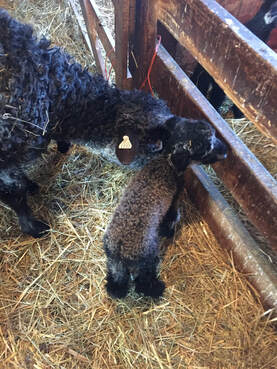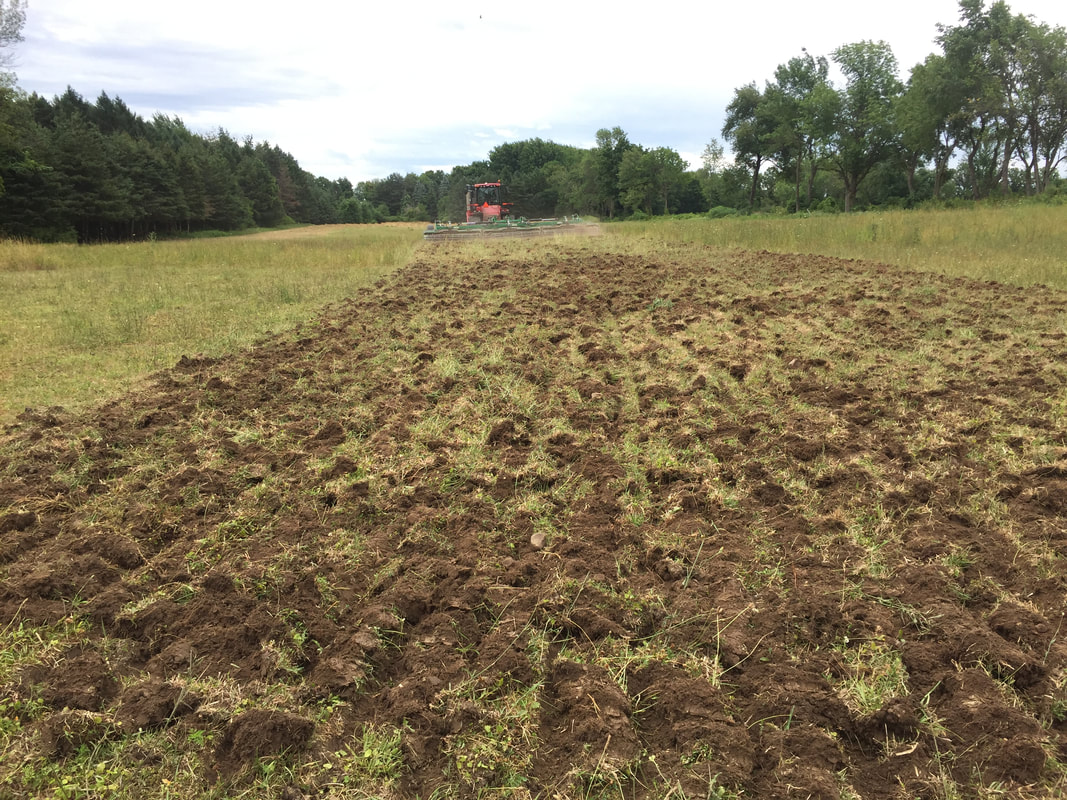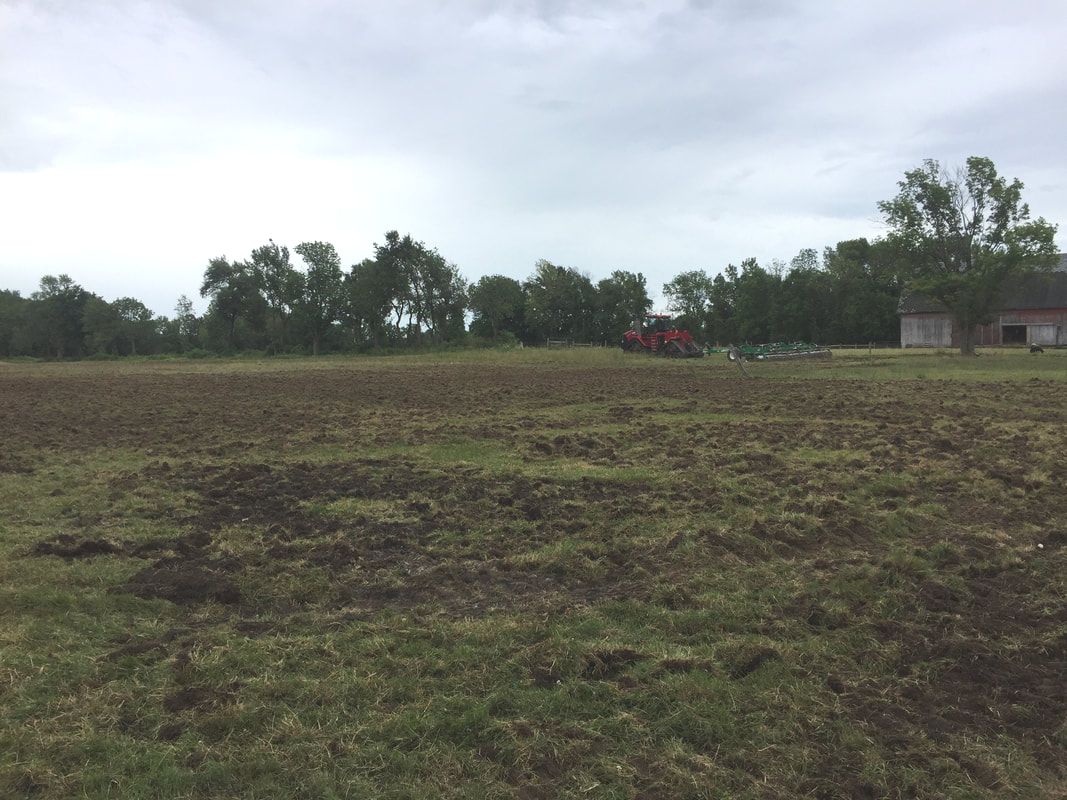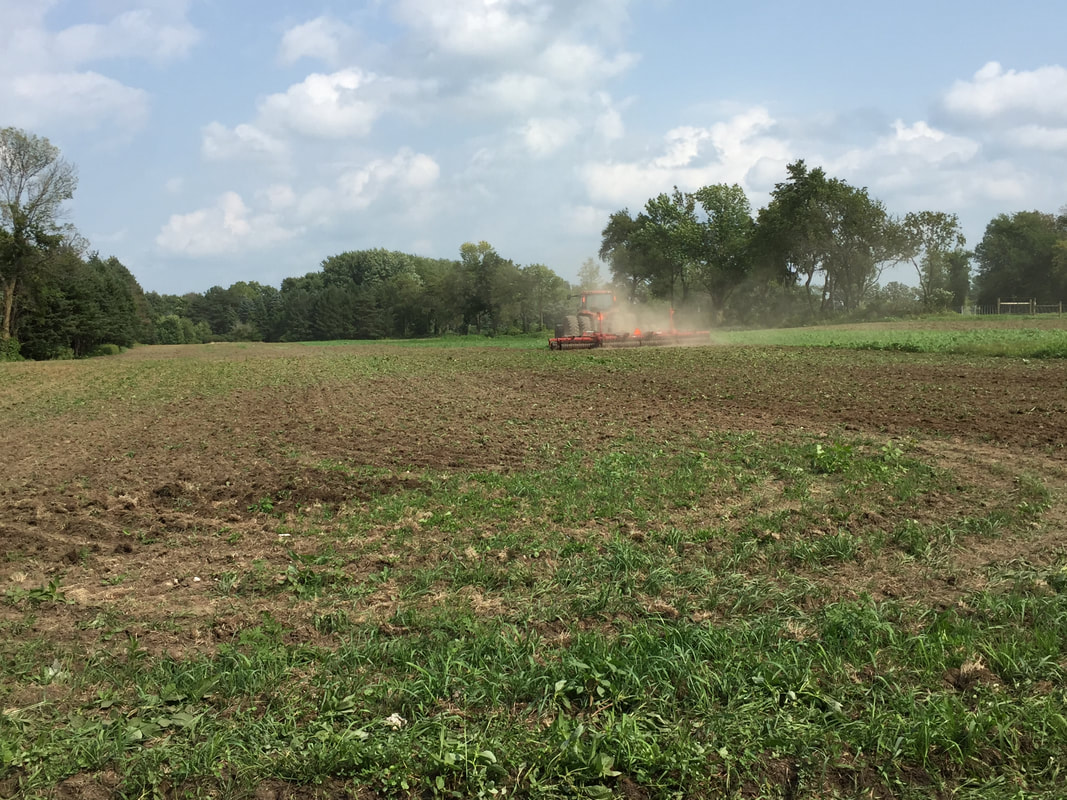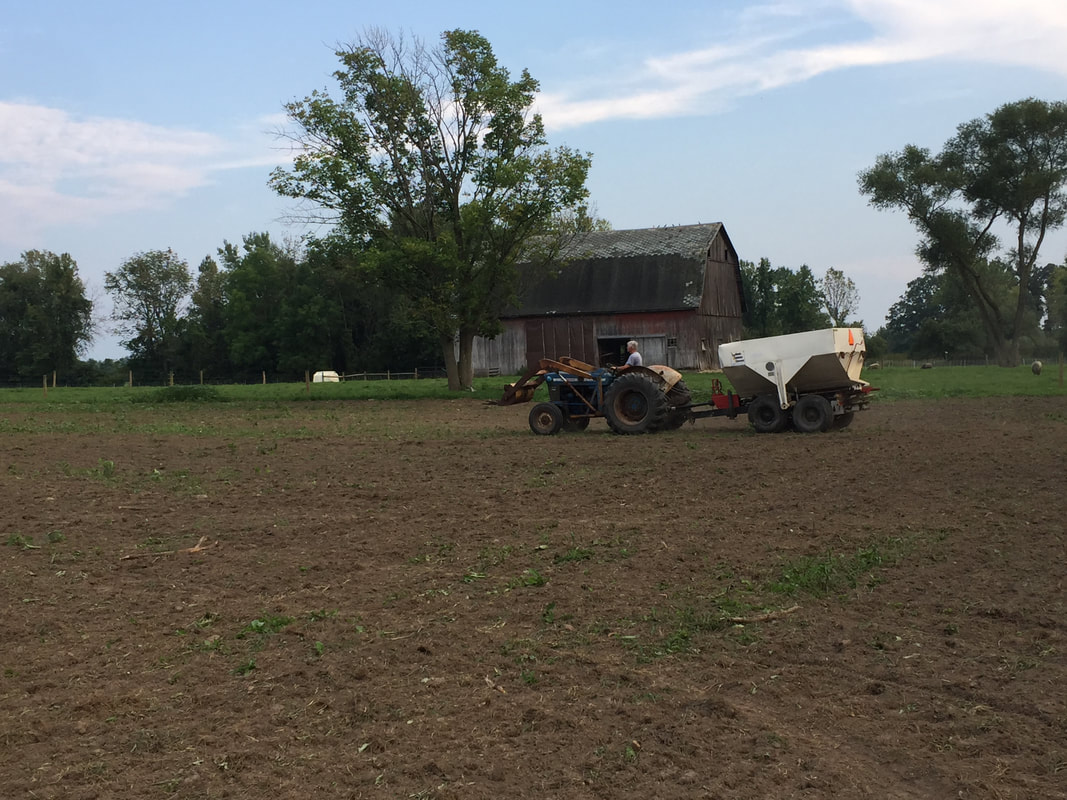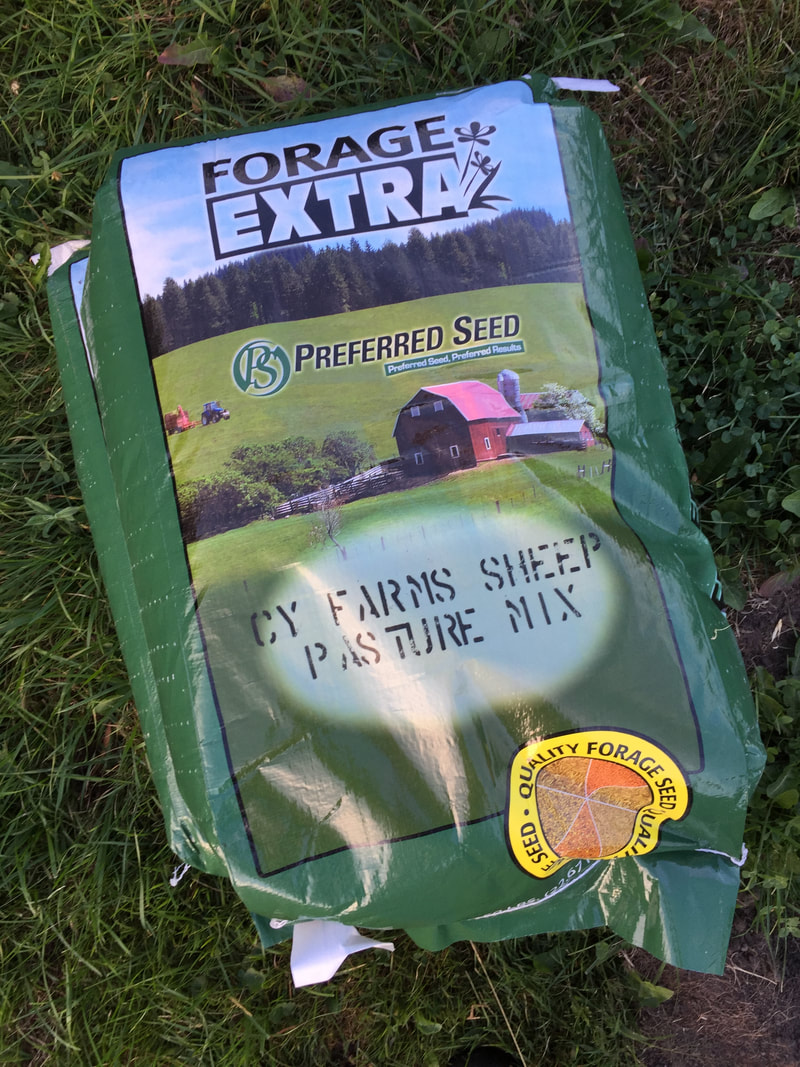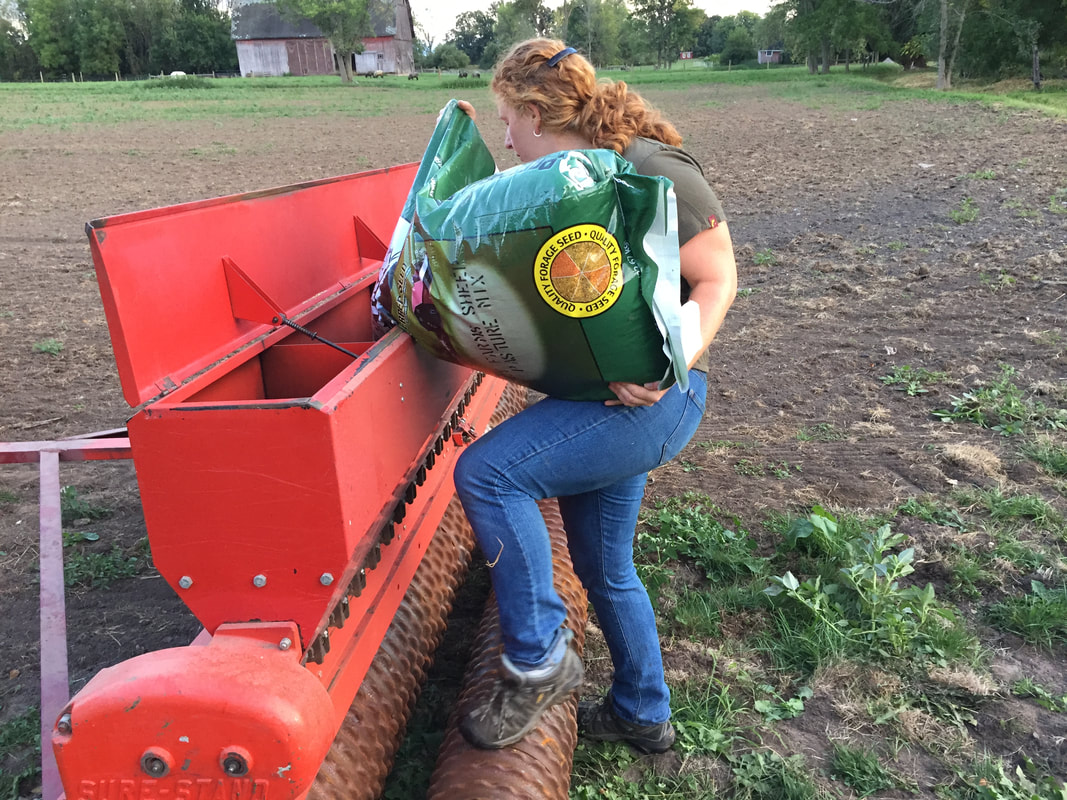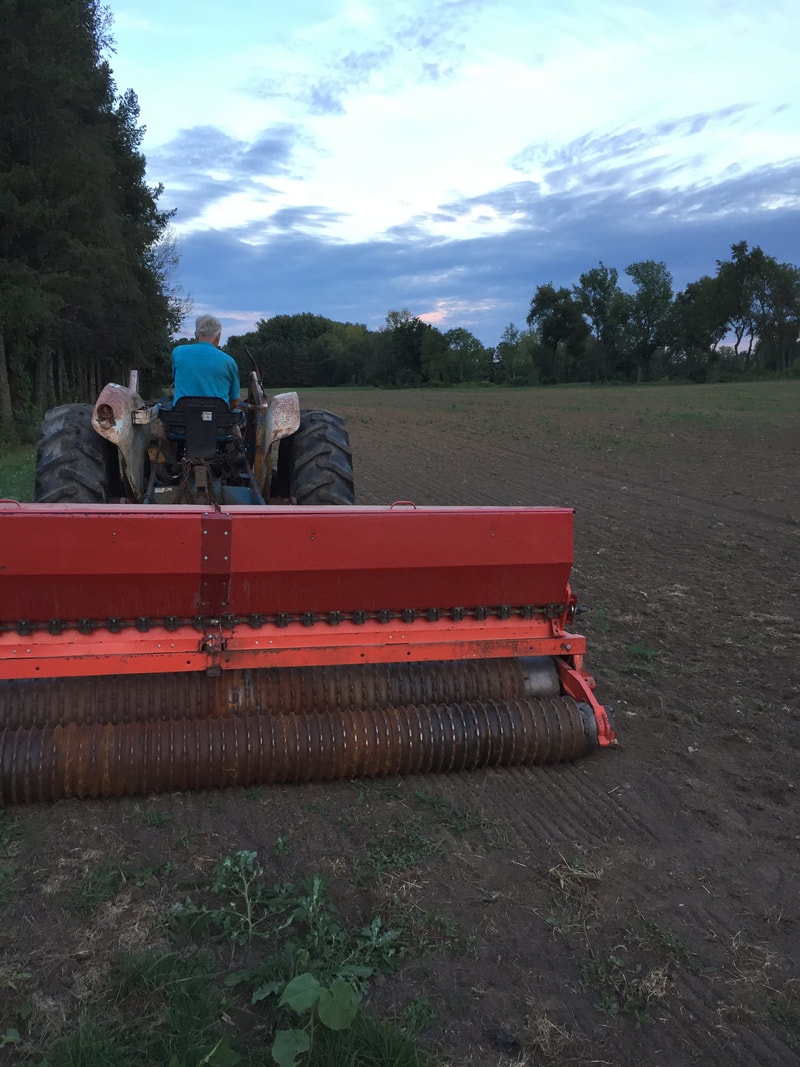|
For years I have been dreaming of creating a flock yarn out of my wool. This past winter I finally decided to make the investment and do it! I had a beautiful crop of lamb fleeces last fall and felt they would make the perfect first batch of farm yarn. I really value local systems and having my yarn be a completely "New York" product was important to me, so I enlisted the help of Battenkill Fiber Mill to process my fiber. The owner, MJ, and I have been friends for several years, interacting through both the fiber and general NY agricultural circles. Since I know relatively little about the spinning process and what yarn would best show the characteristics of my wool, I trusted her to do what she thought would be best! What I received was an absolutely gorgeous 2-ply DK weight yarn with amazing luster and softness unlike traditional Lincoln Longwool yarns, thanks to using lamb's wool!. She separated out the natural colored fleeces to develop two different gray colorways and I could not be more impressed! The yarn came back from the mill in 4 oz skeins. Each skein is around 225 yards. I have spent the spring and summer washing the skeins and prepping them for sale. I'm still working on the ideal label, but am happy with my first attempt. It is so fun to look at the finished skeins and think " that's my wool!". I'm currently working on getting an online store finally set up. I decided to name this yarn "Empire", to encompass the fact that it is a New York product and also go with my farm name, Orchard View. The Empire apple was developed at Cornell University in the 1940's and this sweet, crisp apple is one of my favorites. Many of you know Cornell is my alma mater, so the name Empire is relevant to me on several levels. As I continue to develop yarn lines, I hope to keep with the apple variety theme. Need suggestions on what to make with this yarn? Once the weather cools and I have a little more time, I'm planning on making this hat (by recommendation of MJ, who spun the yarn), a cowl like this one or this one, and a shawl similar to this one or this one. Maybe I'll try my hand at my first sweater this winter; I've been eyeing this one for years and the charcoal gray might just be perfect! Stay tuned as I play with the yarn and knit up some samples, but don't hold your breath because it won't be until the weather gets cooler this fall. I'd love to know if you have any pattern ideas that might work with this drapy, lustrous yarn. Or better yet- if you have completed projects, I'd love to see them!
2 Comments
Even though winter seems so far away right now, it's time to start prepping for those chillier days! As my flock has grown, our need for hay has also grown. Thankfully, we have a great neighbor just a mile down the road that is able to bale all the hay we need for the year. It is just a basic grass hay with a little bit of clover and it provides adequate nutrition for the sheep. He delivers the wagons right to the farm and with some help from friends, we get the bales unloaded and into the mow. With two people unloading bales onto the elevator and two people stacking up in the mow, the process goes pretty quickly. Despite all the rain this spring, July has brought beautiful baling weather! We got 10 wagons unloaded in 4 evenings over the past couple weeks. Thankfully, it wasn't too hot until the last night!
This year, we put almost 1,000 bales up in the mow. We can now sit back and enjoy the rest of the summer knowing that the sheep will be well fed this winter. There's a holiday that shepherds celebrate one to two times per year... shearing day! Raising a longwool breed of sheep means that shearing happens twice for us; spring (April/May) and fall (November). I've known my shearer, Colin, since our 4-H days and he comes out from Connecticut to help with the task.
The first thing we do is separate the sheep into groups. This spring, we only sheared the mature ewes who had lambs over the winter, and the rams. The lambs and yearlings won't be sheared until the fall, as I am striving for longer fleeces in my flock. Having everyone separated and penned up at the start helps the day run efficiently. Once we get started, it's an "assembly line" of shearing, packing wool, hoof trimming and deworming. I help corral/catch the sheep, Colin shears, and my friend Anna is the designated hoof trimmer. Sheep's hooves grow just like our fingernails and need to be regularly trimmed. After the sheep are sheared is a great opportunity to do this, along with giving them a dewormer as the pasture is just coming on strong. Meanwhile, I inspect each fleece both on and off the sheep and decide whether it should be kept, and what it should be used for (sold raw, processed, etc.). Shearing provides a great opportunity for the shepherd to inspect all the sheep and determine how they recovered from lambing, their udder health, hoof health, and overall condition. While I'm in the barn 1-2x/day throughout the year, I don't necessarily get up close and personal with every sheep like we do on shearing day. This spring, we sheared 25 sheep and it took us 4 hours. We might not be the fastest crew out there, but going a bit slower reduces our stress, which in turn is less stressful on the sheep. And we have a fun time doing it as well! We always start with donuts and coffee and end the day with pizza from our favorite pizza shop in town. I have a handful of winter fleeces available for purchase. Winter fleeces aren't the highest quality, as ewes use much of their energy for growing and feeding their lambs. There is also a bit higher vegetative matter (VM) since they have been fed hay all winter long. But, with a little love they would make an excellent raw fleece! Now is the fun part, watching them grow their wool back all summer long.  First lamb born, a huge single ram lamb. First lamb born, a huge single ram lamb. 40 lambs!!!!!!! At no point when I started raising sheep as a 12 year old, did I ever think I would reach the point where lambing season concluded with 40 LAMBS, but here we are. This year's lambing season seemed to drag out longer than usual (starting January 9th and ending yesterday, April 9th), even though it started a few days late and I was gone for several weeks in the middle of it. It's amazing how much the weather in July and August seem to dictate how the lambing season goes. Here are a few stats of this year's lambs: 24 Ewe lambs 16 Ram lambs 31 Natural colored Lincolns 5 White Lincolns 4 Crosses For once, it seems like the ewe:ram ration is in my favor! We had the least number of singles in a few years, which is fantastic, and even had two sets of triplets. And only one bottle lamb, which makes me quite happy. 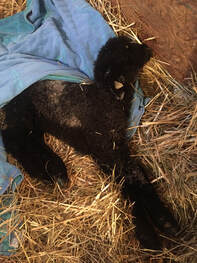 Lamb with signs of polio- thankfully he fully recovered! Lamb with signs of polio- thankfully he fully recovered! No lambing season ends without problems, and this year we did lose a couple lambs and one ewe, all to issues that likely couldn't have been prevented. We did have a miracle lamb this year that got polio and was touch-and-go for about 48 hours and after aggressive Vitamin B supplements, has recovered fully. After 15 years of lambing, I had no idea until this year that polio caused by vitamin B deficiency is even something that can happen to lambs! We ultrasounded our ewes for the first time in late November and only had one come up open. But, come mid-February, it became very clear that was indeed NOT open. She rounded out our lambing season with a vaginal prolapse and lambing several days after her last possible due date (the rams came out on shearing day, 11/5). I'm always amazed at how I continue to learn annually and encounter new problems. You'd think that after 15 years and nearly 300 lambs, we would've seen it all, but that never seems to be the case! So far, the lambs are growing well and I look forward to many going to their new homes over the next month. We still have lambs for sale if you are interested! :D Many of you know how passionate I am about preserving rare breeds of sheep, hence part of my decision to raise Lincoln Longwools. The Livestock Conservancy is an amazing organization dedicated to preserving endangered livestock breeds from extinction. The Lincoln Longwool is listed as "threatened" by this organization.
The Livestock Conservancy currently has an awesome initiative to encourage fiber artists to use wool from the 22 sheep breeds on the Conservation Priority List. The Shave 'Em to Save 'Em campaign began in January and will run for three years. The campaign encourages fiber artists to buy and use the fiber from breeds on its Conservation Priority list in a project. This can include spinning, knitting, felting or other fiber arts. When you purchase wool from a producer who is registered with the campaign, you will receive a sticker to put into your "passport". You earn prizes for using 5, 10 or 15 breeds, and more importantly, you are helping to increase the commercial and financial viability of raising rare and heritage breeds. To find the rules in the files section, along with announcements and discussion, visit their Facebook Page, Ravelry Page, or visit www.rarewool.org! Here's how you can participate: 1) Sign up as a Fiber Artist at www.rarewool.org 2) Buy wool from rare breed Fiber Providers and get a sticker in their “passport" 3) Share pictures of their projects on Facebook and/or Ravelry 4) Earn great prizes! I am registered as a fiber producer with the campaign, already have my stickers for you and am ready to ship you gorgeous rare breed wool! I hope all of your fiber artists out there consider supporting rare breeds and participate in this great opportunity. 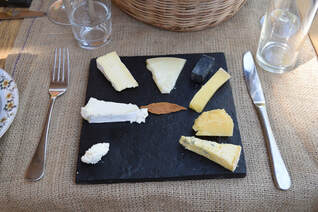 Cheese tasting at Brown's Cheese. The Red Maasai cheese is the black one in the top right. Cheese tasting at Brown's Cheese. The Red Maasai cheese is the black one in the top right. Last month, I had the opportunity to visit Kenya for ten days, as part of an agricultural leadership program called LEAD New York. This two year program ends with an international capstone trip to learn about agriculture and development in a developing country. While I could do a whole series on this trip, I wanted to highlight something I learned about and saw: the Red Maasai breed of sheep. First of all, I don't think I have ever seen so many cattle, sheep and goats in my life! They are everywhere: along the highway, in the medians, grazing everywhere you look whether you are in Nairobi or out in rural areas! As I am not nearly interested in cattle and goats as I am sheep, I wanted to share a little about this interesting heritage breed. The first time I heard of the Red Maasai sheep was during our second day, on a visit to Brown's Cheese. Delia and Andrew Stirling (both Cornell alumni!) are one of the only artisan cheese makers in East Africa. They source much of their milk from smallholder farms who have, on average, 2 cows and only a handful of sheep or goats. The are both passionate about working with NGOs to conduct research on how locals can improve the nutritional quality of their milk. The majority of these farmers live off of what they cannot sell, so helping to improve fat and protein content of the milk is beneficial for their families as well as cheese quality. In addition to working projects related to cattle nutrition, they are also interested in preserving the Red Maasai breed of sheep. The Red Maasai traditionally belong to the Maasai people, one of the largest tribes in Kenya and East Africa. But, they are currently on the verge of extinction, as they are routinely bred with Dorper sheep for better growth and conditioning. They are hoping that creating a cheese with Red Maasai milk will help promote this traditional breed. The cheese is inspired by mursik, a traditional Kenyan yogurt that is smoked, fermented, and preserved with charcoal. We had the opportunity to try the cheese. Similar in style to a pecorino, it is a unique blackish color from ash (made from banana leaves) and has a unique flavor as well. As much as I wanted to like it, it wasn't my favorite cheese I tried that day, but I love the mission behind it. Brown's has several Red Maasai sheep that live at their farm that they have for demonstration. I highly recommend the trip out to their farm for a lunch if you ever find yourself in the Nairobi area! After this day, I began to notice Red Maasai sheep and crosses everywhere. They are fatty tailed, hair breed sheep with a very distinctive and beautiful red color. They are known for their hardiness in arid conditions and have great internal parasite resistance. They are called Maasai sheep because they are traditionally raised by the Maasai people of East Africa who are pastoralists. It is a traditional belief that the Rain God entrusted livestock to the Maasai when the earth and the sky split, and according to legend the Red Maasai sheep was the first animal kept by the Maasai. Dorper sheep were introduced in the 1970's, so most of the sheep now are crosses. But, just like any other heritage breed, preserving the Red Maasai sheep is important for genetic diversity. Here is a collection of Red Maasai sheep photos of my trip. Enjoy! A few weeks ago, I wrote about ewe #223 who gave birth to two stillborn lambs. She was able to give the gift of colostrum to future lambs in our flock. Since then, she has continued to give an amazing gift to our flock. The following day, a ewe gave birth to triplet lambs and only wanted to take care of one of them. By the time we realized that the other mother was rejecting two of her lambs, they were already dried off and the placenta discarded, so we couldn't utilize that method of attaching the lambs to a new mother.
Since this was only 24 hours after #223 gave birth, she still had a lot of milk and we began tying her up to let the rejected lambs nurse. She didn't seem to mind, as long she had a halter on and was tied up. After nursing, we would put the lambs back with their own mother, but began to notice her being violent towards the two. So, we gave #223 a shot of oxytocin to boost her mothering instincts and put the lambs in a small jug with her. Unlike their own mother who kept pushing the lambs away, #223 began sniffing them and showing a bit of interest in them. After another 48 hours and another shot of oxytocin, she began to give the "mother baa" and accept the two lambs as her own! There are so many situations during lambing season that take a lot of patience, but this one of the times where patience really pays off! It's often time consuming and annoying to tie a ewe up every time you go to the barn to feed or do a lamb check, but the two lambs are healthy, growing well and we avoided having two bottle lambs (which would be even more work)! We are even more thankful for #223. 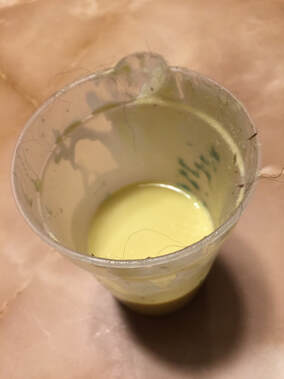 For several weeks now, I have been keeping a close eye on ewe #227. She's my smallest ewe and this year is her first year to have lambs. She has been absolutely enormous for the last three weeks or so, much more so than any of the other ewes. Every lamb check, I have been making a special point to check on her. This afternoon, I got a call from my dad while at work that she had given birth to a stillborn ram lamb. I promptly told him to go back out (in the 0 degree wind) and check to see if a second lamb had been born, as the ultrasounds back in November showed she was expecting twins. A little while later, he called back to say the other lamb was stuck backwards and had to be helped, but was also born dead. It appeared that they had not been alive for several days, based on the color of her placenta. While this is disappointing, it is a reality for every shepherd. Not everything going perfect all the time, and we always expect a few random issues that cannot be predicted. But, there is one silver lining and that is COLOSTRUM, or "liquid gold". Colostrum is the first milk provided by a mother and is very rich in nutrients, protein and antibodies. We call it "liquid gold" because of the thick consistency, yellow/gold color, and importance to the lambs. Getting a good feeding of colostrum is very important to lambs, particularly in this very cold weather we have been having. Feeding colostrum can perk up almost any cold or lethargic lamb. While powdered colostrum exists, nothing beats the real thing! During evening chores this evening, dad and I gave her 1 cc of oxytocin. Oxytocin can be used to help stimulate contractions, as well as stimulate the milk letdown reflex. Normally, when lambs begin to nurse, the ewe's body releases oxytocin and the milk is let down into the udder for the lamb. With ewe #227, she did not have lambs to stimulate milk letdown, so we helped her out a little. After ten minutes, I was able to milk out about 1 cup of colostrum. We will freeze this colostrum and be able to give it to a lamb who may need it in the future. Colostrum in the freezer is something every shepherd should have on hand! Even though #227 doesn't have her own lambs, I am thankful for the gift she will be able to pass on to another ewe and her lambs. Those of you who know me, know that I cannot pass up anything sheep-related and books are definitely included. I wanted to share a few of my favorite sheep-related books that some of you other sheep lovers might enjoy! I also plan to share with you at some point some of my favorite books guides to raising sheep, as that is a common question I get from people new to raising sheep. Ranging from children's books, to fiction, to non-fictional accounts of starting a farm, all are enjoyable. With the upcoming show storm this weekend, head to the library to grab them all! Do you have a favorite book about sheep that I haven't mentioned? Let me know so I can add them to my own reading list! Emma's Lamb- Kim Lewis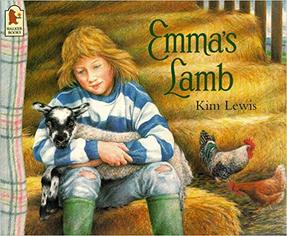 This, as you can imagine, is my favorite children's book. It was pretty much written for me... Kim Lewis has great sheep-related children's books with beautiful illustrations, and I recommend them all! "The Shepherd Boy" and "Floss" are other family favorites. Three Bags Full-Leonie Swann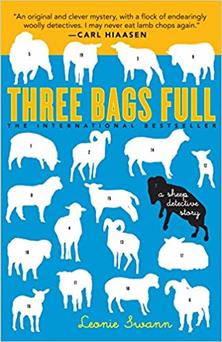 This is one of my absolute favorite books and a must-read for any sheep lover! I discovered this book at the Ithaca Book Sale in college when my friend randomly pulled it off the shelf for me, solely because it had "sheep" in the title and on the cover. This is a detective story, told from the perspective of the sheep, who are determined to find out who murdered their shepherd. I don't know anything about the author, but he must have had sheep himself because the personalities are spot-on! The Shepherd's Life- James Rebanks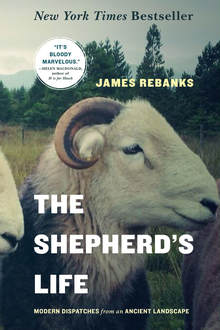 I was told about this book during my trip to the UK in 2016 and bought it immediately when I returned. While I haven't finished it yet, I am really enjoying it thus far! He has also published a book called "The Shepherd's View", which is filled with photos of The English Lake District. A Shepherd Looks at Psalm 23- W. Phillip Keller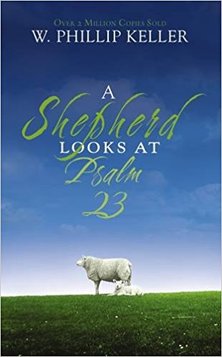 I have read and re-read this book and have gifted it to so many others. A quick, profound (yet simultaneously simple) read, it really opens your mind to why we are considered the sheep of God's flock. Each chapter covers a line of the Psalm and relates it to a real-world shepherd/sheep relationship. I could relate to all the examples given throughout the book and it made me appreciate this beautiful Psalm so much more. The Yorkshire Shepherdess- Amanda Own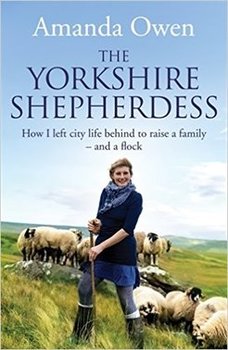 I don't remember how I first heard about this book and Amanda Owens, but I'm glad I did. She became known through being featured on "The Dales" TV series in the UK (anyone know how I can access this???) and has since written two books and become a known speaker. The book opens your eyes to the remote life of shepherds in the highlands of Yorkshire. Her account is insightful and she is definitely someone other women can look up to. The sequel is called "A Year in the life of the Yorkshire Shepherdess", which I also own but haven't read yet. The Lambs- Carole George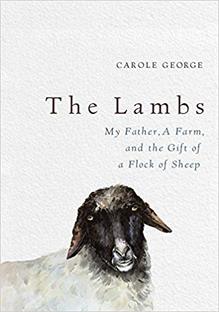 I discovered this book on Instagram, and listened to the audiobook version. Did I like it? Nope. But some of you might enjoy it. It is a story like so many others out there about someone who buys a small farm and wants to write about their story and the things they learned. So many things she wrote about were unrealistic (closing her law office to become a "full time" shepherd of 10 sheep, letting her sheep in the house to listen to the piano, etc.), that I found much of her account simply annoying. While this book isn't my favorite listed here, it is cute and some of the history of the Karakul breed that she covers is interesting. If you read it, I'd love to hear how you think this compares to other "I bought a farm" books! Sheep in a Jeep- Nancy Shaw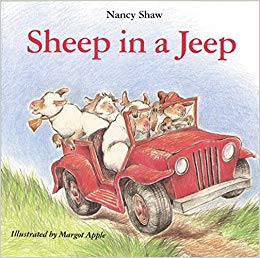 My family has several of Nancy Shaw's books, all of which are delightful poems about a quirky flock of sheep. I recommend them all including Sheep in a Jeep, Sheep Go To Sleep, Sheep Take a Hike and Sheep Trick or Treat. Henry Moore's Sheep Sketchbook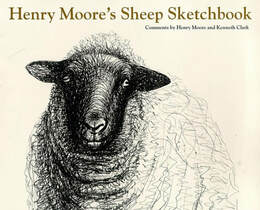 This beautiful coffee table-type book was gifted to me by Bernice, the mother of my boss who lives across the road from the farm I work at. The sketches are beautifully detailed and depict the personality of sheep perfectly. Not a "read", but would make a great gift for any sheep and book lover. This summer marked the forth summer in my house, which is pretty hard to believe! I was lucky to be able to purchase a house next door to my parents that came with a small barn and just over 10 acres of land. Four acres of that was a fallow field that we have been grazing the sheep on for the past few summers. I don't know when the last time it was actually seeded with a crop, so it was mostly native grasses with a lot of plantain and other weeds the sheep weren't too crazy about. Since I bought the property, it has been my dream to seed it with an actual pasture mix. We have never actually seeded a pasture in the 15+ years I've been raising sheep. I've been doing some reading on the species I wanted to plant, but since we don't own equipment ourselves I needed to line up people to do the work for me. The summer of 2016 brought a bad drought and last summer (2017) was incredibly wet, both of which weren't ideal conditions for seeding a pasture. Finally, we decided this year was the year! I work for a large farm, so I had access to some equipment that the average person working up a 4.5 acre field wouldn't need, but they were able to help me get the job done quickly and efficiently! Step 1: Speed tillOn July 23rd, after we had finally gotten some rain this summer, the farm I work for was in the area with the speed-tiller and stopped to work my field up. This implement is really useful for ripping up sod, as the disks are able to go fairly deep in the soil, while still maintaining a good speed with the tractor. As I mentioned, this is probably not an implement that a small farm would have access to without having a custom operator come in to do the work (as I did). Four times over the field left it nicely worked up, the sod chunks broken up and ready for the next step. Step 2: CultimulchThe next step was to cultimulch the field to put the "finishing touches" on before seeding. A cultipacker or cultimulcher is used after the field has been plowed and/or disked. The purpose is to crush soil clods and firm the soil surface. This levels the ground and prepares the field for planting. A cultimulcher is an important implement for preparing seedbeds for grass and clover, which I planned to plant. The seeds of these plants are small and need firm contact with tilled soil for germination. Unfortunately for us, it started raining at the end of July and rained regularly throughout the month of August, making this task difficult to time. At the end of August I was able to line up a nearby dairy farm to help with the task. They came to do the first pass on August 26th. As you can see by the photo above, many weeds had started to grow, but two passes over the field were able to knock most of them down. I'm also hoping allowing the weeds to germinate during that month will reduce weed pressure this fall, which is the concept behind a stale seed bed. Step 3: FertilizingWe didn't have time to clean out the barns and apply manure to the field as a fertilizer source, so we decided to apply fertilizer. I wanted to make sure that as long as we were taking the time and money to do this project, that we were doing it well. Hopefully this pasture is a long term investment for my flock. I work with Carolina Eastern Crocker with work, so called them up to help formulate a blend. Ideally, I would've soil sampled the field to get an idea of what nutrients are out there, but just didn't have the time. They formulated a 10-20-20 fertilizer with some sulfur and calcium added. Applied at 200 lbs/ac, this should provide plenty of nutrients to get the grasses and clovers established. We were able to rent the spreader and they delivered the spreader full of fertilizer right to the farm. Following the fertilizer application, we went over the whole field again with the cultimulcher to work the fertilizer in. Then we were ready to plant! Step 4: SeedingI have gone back and forth over the last couple years, trying to figure out what blend I wanted to seed with when I finally got to this project. I've been doing some reading on what forages are best for sheep, trying to figure out what might do well in the areas of the pasture that are more wet, and which species/varieties would be the best value. White Clover Farm in the Finger Lakes has some interesting articles on which species he plants, which (as you can guess by his farm name) is mostly white clover. The farm I work for grows turfgrass and we have some great connections at Preferred Seed in Buffalo who were able to help me formulate a blend that would work for productivity, nutrition, be long-lasting, and grow in the wetter areas of the field. We ended up with a blend of orchardgrass, white clover, perennial ryegrass and Kentucky bluegrass.
To seed the pasture, I borrowed a Brillion Turfmaker from the farm I work for. This 1980's seeder was used for many years to seed our turfgrass fields and still works great. Those of you looking to seed can probably find one of these (or something similar) at a local farm or in someone's barn somewhere. Getting the calibration for the seed rate was a bit tricky. I knew I wanted to seed at 30 pounds/acre, but we set it conservatively low the first time over the field to make sure we would have enough seed. It took my dad three times over the field to use up all the seed. He was a little annoyed, but we went over the field 2 different directions to help with coverage. Normally, you'd want to go over the field with the cultimulcher again to get good seed-soil contact, but since the seeder has a small one built in and we went over the field 3 times, I didn't feel like a final pass was necessary. A few days after seeding, we got 1.5"of beautiful, steady rain which couldn't have been more perfectly timed! Now we wait for the pasture to grow.
Please feel free to ask questions about my process. I am not an expert and relied on reading articles and consulting with people who are to help me figure out what I needed with regards to a species blend. I'd be happy to discuss my process further, share the financial investment it took, or answer questions for anyone who is interested. In the meantime, I'll keep you updated with the growth progress throughout the fall. |
AuthorEmmaline Long, main owner of Orchard View Farm, has a passion for Lincoln sheep and loves educating others about her breed and farm, She currently serves as the Vice President of the National Lincoln Breeders Association. Archives
October 2020
Categories
All
|
Orchard View Lincoln Longwools7617 S. Lake Rd., Bergen NY 14416 |
Contact UsStay Up-To-DateFollow our blog!
|
